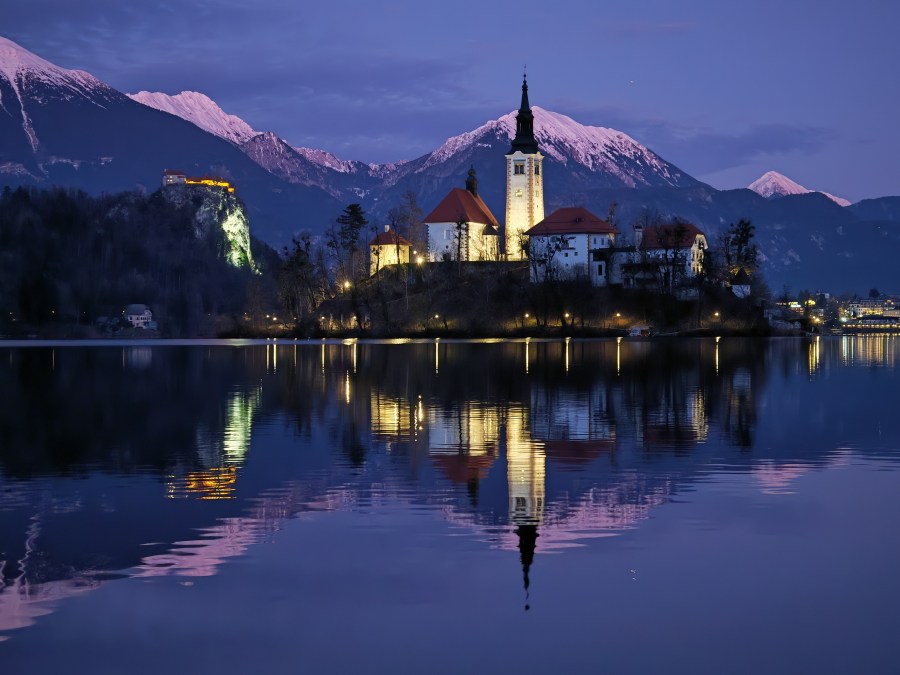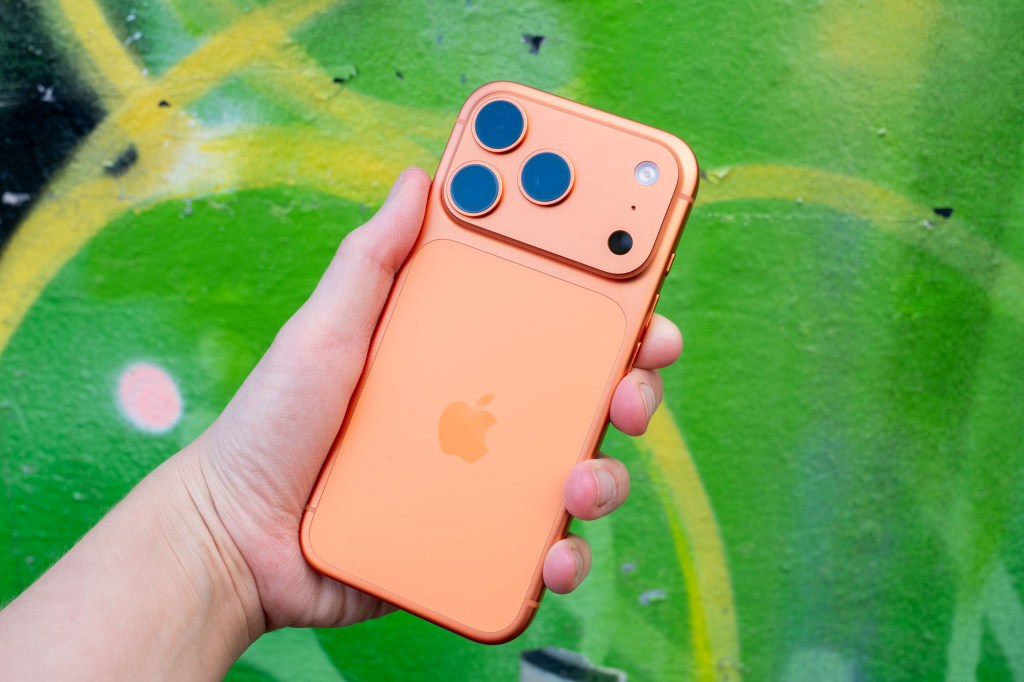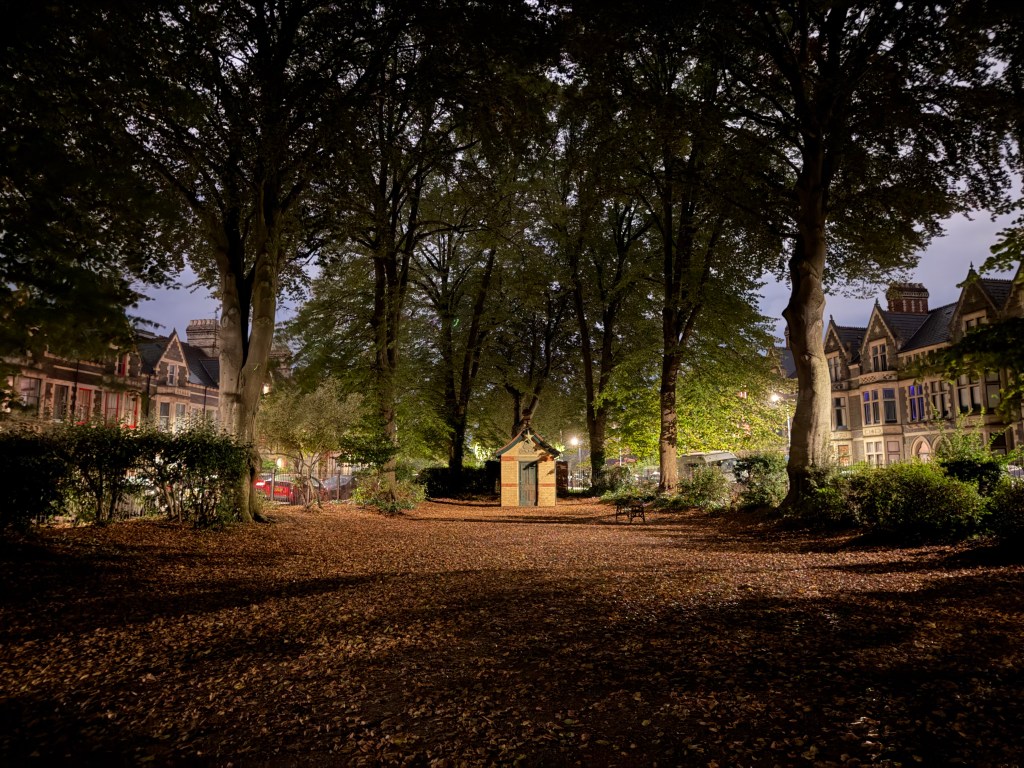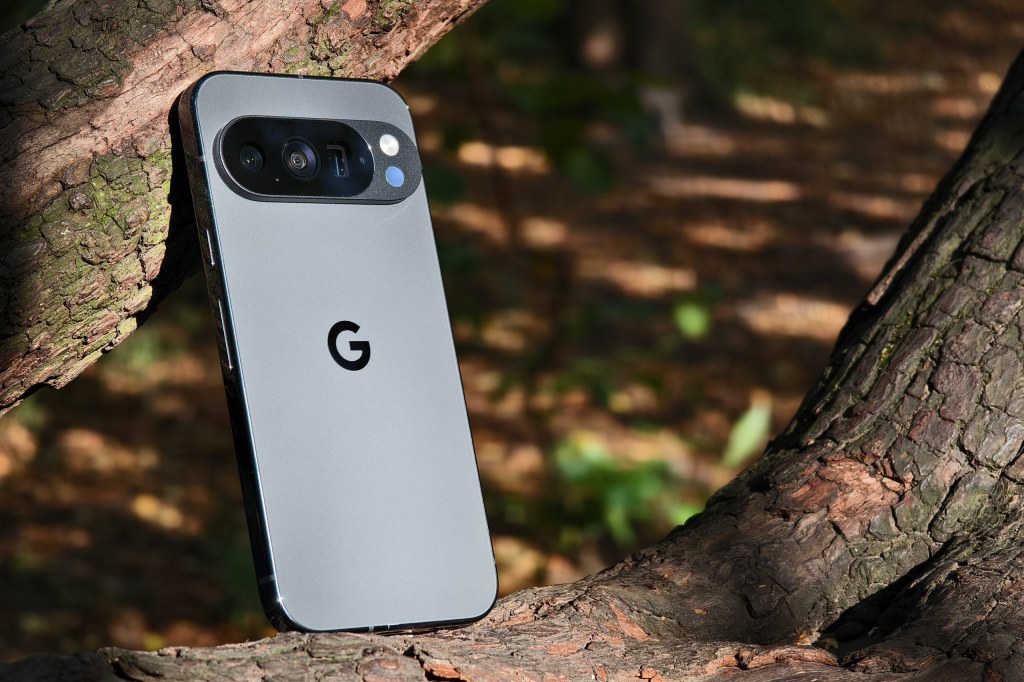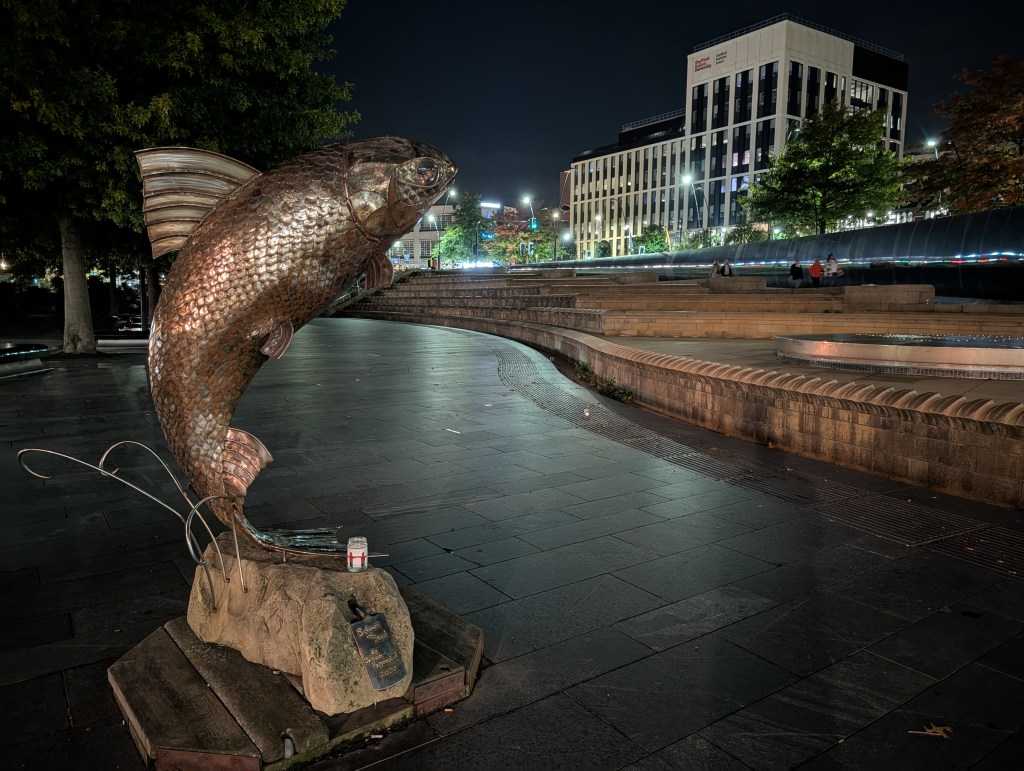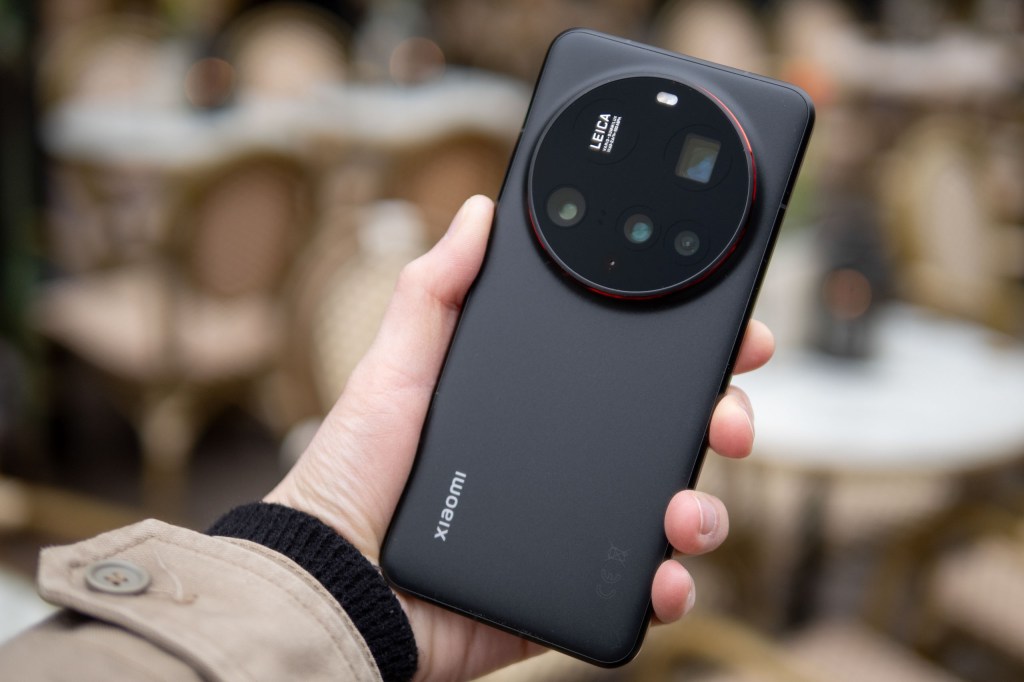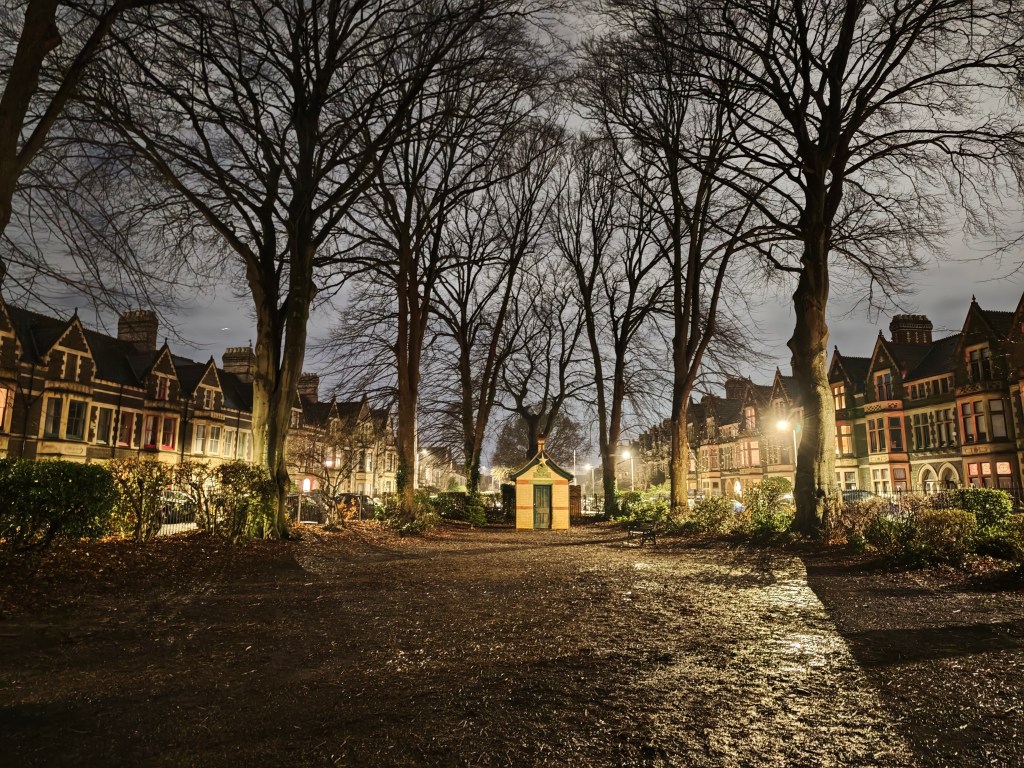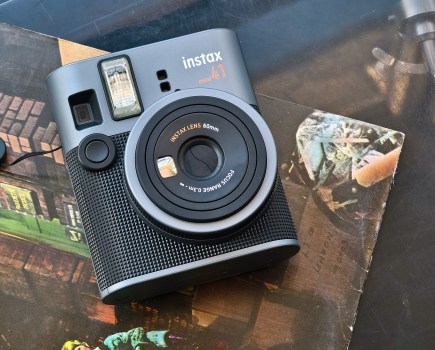The best smartphones for photography are also some of the best for low light. Small sensors have a hard time in the dark, yet many recent smartphones are equipped with powerful night modes that yield surprisingly decent results. It’s something that many smartphone manufacturers have highlighted in their marketing material, so there’s been a big drive from all the major producers to outdo each other in this field – great news for us.
Almost all of the current smartphones on the market have some kind of Night or Low Light mode, which often kicks in automatically when there’s not much light detected in the scene. In this guide, we’ve rounded up the phones that stood out during testing and offer the best performance in the dark. While great for low light, these devices also offer a solid all-around shooting experience, making them a good value for money.
Our list rounds up the best phones for low-light photography at the moment. All the phones on this list are ones our team has tested and reviewed – we’re only recommending products with which we have hands-on experience. Read on for our full list, and scroll to the bottom of this page for an explainer on how low-light modes work in smartphones, with tips on how to get the best out of them.
Best smartphones for low light at a glance:
- iPhone 17 Pro – Buy Now
- Samsung Galaxy S25 Ultra – Buy Now
- Google Pixel 10 Pro – Buy Now
- Xiaomi 15 Ultra – Buy Now
- Honor Magic 7 Pro – Buy Now
Why you can trust Amateur Photographer
We spend many hours testing every product we recommend, in detail, in a variety of situations and shooting scenarios, and only use experts for our reviews, so you can be sure that you’re getting the best products. Find out more about our expert writers.
Apple iPhone 17 Pro
Amateur Photographer verdict
The 17 Pro delivers excellent low-light performance, capturing sharp, detailed, and vibrant night shots with ease thanks to its advanced sensors and intelligent Night mode.- Improved selfie camera
- Triple high-resolution sensors
- Tough body
- Relatively minor upgrade overall
- Limited colours
- High price
The iPhone 17 Pro excels in low-light photography thanks to its upgraded camera system, which includes three high-resolution 48MP sensors. These larger sensors capture more light, helping to produce sharper and more detailed images in dim conditions. Night mode automatically activates in darker environments, and intelligently adjusts exposure to retain detail in shadows without overexposing bright areas. Even at higher zoom levels, the phone maintains a surprising level of clarity thanks to the “optical quality” digital zoom, which crops the central portion of the high-resolution sensor.
The ultrawide lens captures more detail than the human eye can see, allowing you to photograph complex scenes in very dark settings. The improved A19 Pro chip further enhances performance as it processes images faster and optimises noise reduction for cleaner, crisper shots. This makes the 17 Pro especially capable for shooting handheld at night or in low-light indoor environments without needing additional equipment.
Additionally, the improved selfie camera supports low-light shooting with its higher 18MP resolution and larger square sensor. It can automatically widen the field of view and adjust exposure for multiple subjects in darker scenes, making it far easier to capture night selfies or group shots.
Like the 16 Pro before, the 17 Pro features a dedicated Camera Control button on the right side, designed to give photographers quick access to key functions. It can be used to switch between lenses, adjust zoom, change photographic styles, and even take a shot without opening the camera app. While some may find it a bit fiddly, especially with a case on, it offers a tactile alternative to touchscreen controls, making it easier to capture spontaneous moments.
Read our full iPhone 17 Pro review
Samsung Galaxy S25 Ultra

Amateur Photographer verdict
With a new telephoto camera and AI-powered editing tools, the Samsung Galaxy S25 Ultra is the best Android phone for night-shooting, even with a few quirks in its handling and operation.- Night mode can be activated manually
- Clean results from main camera
- 3 high resolution sensors
- Expensive
- S Pen no longer works as remote release
iPhone 17 Pro at a glance:
- 48MP wide camera, f/1.78 aperture, 24mm equivalent, OIS
- 48MP ultrawide camera, f/2.2 aperture, 13mm equivalent
- 48MP 4x telephoto, f/2.8 aperture, 100mm equivalent, OIS
- 18MP “Center Stage” selfie camera, f/1.9 aperture
- 4K 120p video recording
Samsung’s newest flagship is the best Android phone you can currently buy for night photography. It’s expensive, but its camera array now includes a 50MP f/1.9 ultrawide sensor, rather than the 12MP in the S24. There’s also a 50MP f/3.4 5x periscope telephoto and a 10MP f/2.4 3x telephoto camera and lets’ not forget the brightest 200MP f/1.7 stabilised main camera of course.
Night Modes are present and correct on this flagship phone. Unlike on the iPhone, this mode can be toggled when you want to use it, rather than just automatically activating when the phone thinks you should use it, which is immediately attractive. It produces clean and punchy results, and can also be used in conjunction with Portrait mode for night-time people pictures.
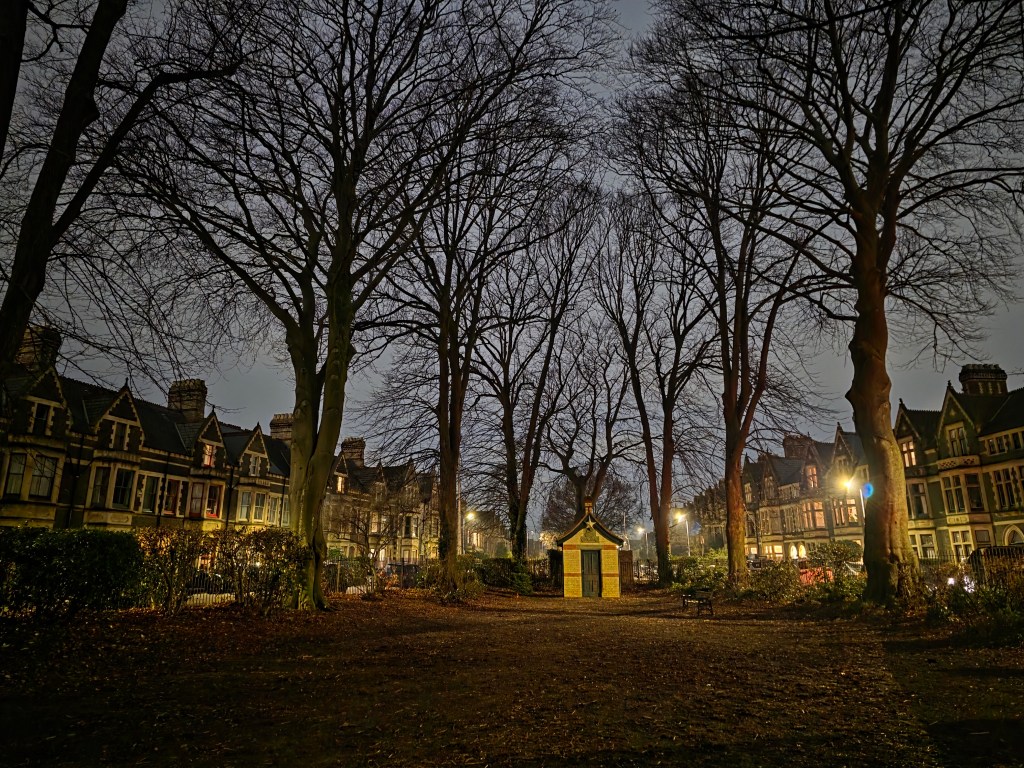
Of course, you can’t really talk about the Samsung Galaxy S25 Ultra without talking about AI. With the S24, Samsung declared that users are entering the “Era of AI” (the implied message being, “whether they want to or not”) and accordingly the S25 Ultra comes with a selection of AI-powered tools too, including AI Generative Fill, or a tool to move objects or people arond in a scene.
This is all powered by the “AI ProVisual engine”, which is designed to boost noise performance and colour production, both things that are helpful for night-time photography.
Overall, we found the Galaxy S25 Ultra to be very good in low-light with the best results obtained from the 200MP main lens, but the 50MP ultrawide lens also delivers a good performance and thanks to the higher resolution sensor it renders more details in the shadow areas than previous Galaxy phones.
All that said the S25 is not a huge update over the S24, so if it is too expensive for you, it’s worth considering the previous Samsung Galaxy S24 Ultra, especially given that you can use the S Pen as a remote shutter release, a feature that comes especially handy when shooting in low light and trying to stabilise your shot as much as you can. You might even want to look at the Samsung S23 Ultra. You can pick up solid bargains on both, especially if you are willing to shop second-hand.
Read our full Samsung Galaxy S25 Ultra review.
Google Pixel 10 Pro
Amateur Photographer verdict
The 10 Pro offers some of the best cameras and shooting features on a camera phone, and gives you images that are genuinely pleasing.- Excellent camera setup with effectively 5 rear cameras
- Lovely colours produced in images
- Really useful shooting features
- Only 128GB on base model
- Video Boost for 8K video is so bad I never want to use it
- Seriously chunky with camera bump
Google Pixel 10 Pro at a glance:
- 50MP f/1.68 wide, 1/1.3inch, OIS, 24mm equiv.
- 48MP f/1.7 ultra-wide with AF, 1/2.55inch, 12mm equiv.
- 48MP f/2.8, 5x telephoto, 1/2.55inch, OIS, 110mm equiv. (up to 100x Pro Res Zoom)
- 42MP f/2.2 selfie with AF
- 4K video front/rear (8K powered by Video boost upscaling)
Night photography is one aspect the Google Pixel 10 Pro really shines. The advanced Night Sight mode automatically activates in low light and works across all three rear cameras—the ultra-wide, wide, and 5x telephoto. The ultra-wide lens also supports autofocus, great for capturing close-ups as well as broader landscapes and street scenes at night. The phone combines high-resolution sensors with pixel-binning technology, producing 12MP images from the main cameras while preserving detail, reducing noise, and balancing exposure for more natural-looking results.
The Pixel 10 Pro’s computational photography and AI enhancements further boost its low-light capabilities. Above the 5x optical zoom, the AI-enhanced ProRes Zoom kicks in to add detail to the image.
Boasting the highest resolution selfie camera on this list with 42MP, it is ideal for low-light selfies too. The combination of high-resolution sensors, intelligent software, and AI-driven processing ensures that night shots retain detail and color accuracy.
There are excellent astrophotography shooting options available if you want to shoot landscapes in very low light – which could be enough to tip the balance from another model to the Pixel if you like to head out after dark. Put it on a solid surface such as a wall, a beanbag, or a tripod with a phone adapter, and you can get exposures several minutes long.
Xiaomi 15 Ultra
Amateur Photographer verdict
For photographers looking for the best smartphone for their needs, the Xiaomi 15 Ultra remains pretty much the king. It’s a shame to no longer have the variable aperture for the main lens, but overall- Class leading one-inch type sensor
- 4x high-resolution lenses
- Leica partnership
- Great photography kit available
- Very high price
- Not available in all markets
- Selfie camera still doesn’t have AF
- Main lens aperture no longer variable
Xiaomi 15 Ultra at a glance
- 50MP f/1.63 23mm equivalent camera with one-inch Sony LYT-900 sensor
- 50MP f/2.2 14mm equivalent ultrawide camera
- 50MP f/1.8 70mm equivalent 3x floating telephoto camera
- 200MP f/2.6 100mm 4.3x periscope telephoto camera
- 8K video at up to 30fps
Hailed in our review as the perfect smartphone for photographers, and a worthy alternative to the bigger-known brands such as Apple and Samsung, the Xiaomi 15 Ultra combines four high-quality Leica optics. It is one of the only phones on the market to feature the largest 1-inch type 50MP Sony LYT-900 sensor currently used in smartphones. This large sensor performs especially well in low light for both stills and capturing up to 8K video.
There are two zoom lenses, the first a 50MP / 70mm equivalent floating telephoto camera, with an f/1.8 maximum aperture. The second is a 4.3x periscope lens, which his 100mm equivalent and has a 200MP quad pixel sensor to back it. The 14mm equivalent ultrawide unit has an impressive 50MP resolution too, paired with f/2.2 aperture.
From the main sensor, as you can expect photos retain plenty of detail, and pleasing colours. The ultrawide lens puts in a good performance as well, while if you select the telephoto options in very low light, you’ll likely find that the phone uses the main lens and crops to get the best results.
For some reason most flagship models have Night mode automatically activating in low light, wthout means to toggle it onmanually. This is the case with the 15 Ultra, as well. Otherwise, you can opt for the Pro mode and a slow shutter speed or use the “supermoon” shooting mode however – this mode almost certainly uses AI assistance to enhance results.
Read our full Xiaomi 15 Ultra review
Honor Magic 7 Pro
Amateur Photographer verdict
The Honor Magic7 Pro is a stylish, well built phone, with a great set of cameras, on paper, but we were left a little disappointed in colour and quality from the telephoto camera, and AI results.- 2-step aperture on main camera (sun stars!)
- Lots of photo modes and options
- Premium build and design
- Selfie camera includes AF
- Inconsistent colour and soft results from the telephoto camera
- AI Super Zoom needs a lot of work
- Phone colour options a bit dull
- Not available in the US
Honor Magic 7 pro at a glance:
- 50MP f/1.4-2.0 main camera, 23mm equivalent, OIS
- 200MP f/2.6 telephoto, 69mm equivalent, OIS (3x optical)
- 50MP f/2.0 ultra-wide, 12mm equivalent, PDAF
- 50MP f/2.0 selfie camera, with AF (22mm equiv)
- 4K 60/30fps front/rear video recording
Here we’ve got another more reasonably priced flagship, which you can pick up for £899 . For that price you get three cameras/lenses, each boasting a high-resolution sensor. The main 1x camera has a bright variable aperture f/1.4-2.0 which helps with better front-to-back focus, especially useful for photographing landscapes at night. The ultra-wide is not far behind with a reasonably bright f/2 aperture and PDAF. While the 200 MP telephoto camera benefits from a larger-than-normal 1/1.4inch sensor with a relatively bright aperture of f/2.6 and optical image stabilisation (OIS). With 3x optical zoom, it is a little behind the rest of the phones on this list in terms of optical reach, but still plenty for most use cases.
You should find that Night mode automatically switches on if light levels are low. You can use all of the lenses with Night mode, and you can also switch it off if it’s not quite producing the right results. Overall, low light images are pretty good, with the best results seen from the 1x and ultrawide lenses, but the 3x zoom doesn’t do too badly either. We have noticed some differences in colour between the main and telephoto units which may impact your photos if you shoot a lot using telephoto zoom. If you are looking for something to capture wide landscapes at night, this won’t be an issue.
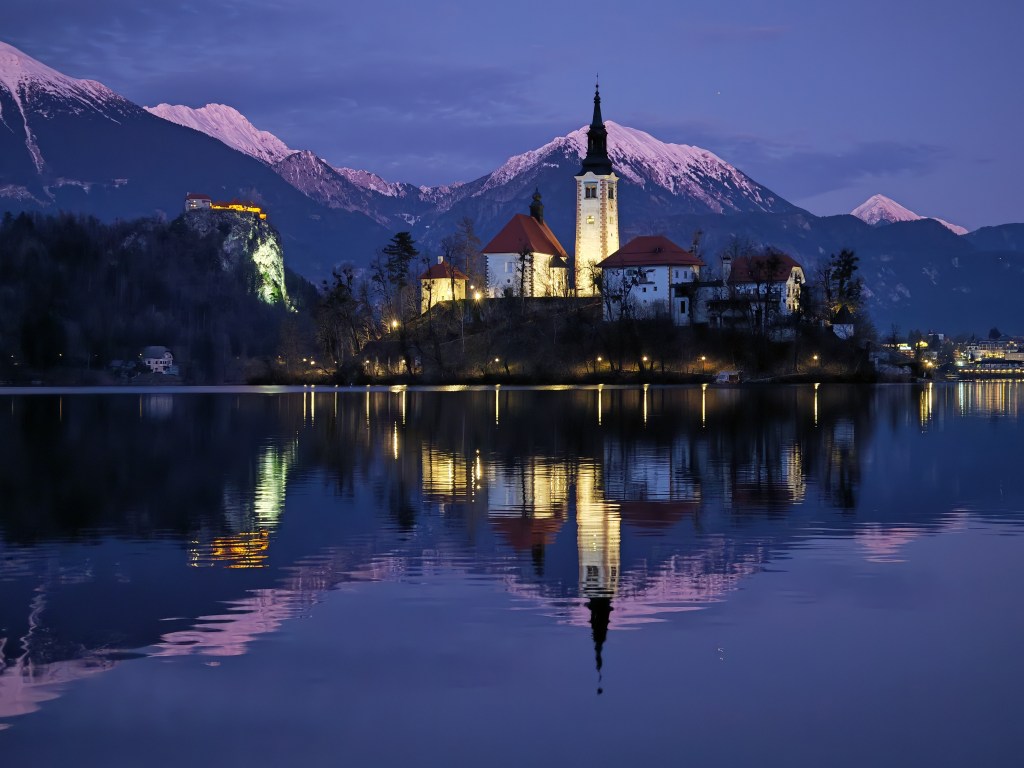
Read our full review of the Honor Magic 7 Pro.
How does a smartphone’s night mode work?
While not every smartphone is exactly the same, the reason that most allow you to shoot night shots handheld is down to the way they operate in low light.
As a rule, they work by shooting several multiple frames at varying exposures, then merging them together (in-device) to create the impression that you’d shot it with a much longer exposure.
Using artificial intelligence to assess how much light is in the scene and how it thinks it should look, the results usually appear pretty quickly, and you might be surprised by just how much detail is reproduced.
Some smartphones have additional lowlight functions, such as Night Portraits (iPhone, Samsung, Pixel) – which blends together the night functionality with the portrait functionality for shallow depth of field effects. You might even find special functions such as Astro mode (Google Pixel) for shooting stars.
If you have a smartphone tripod – or another stable surface – you can sometimes get the phone to shoot even longer exposures for even better results, but generally, the fuss-free options are pretty good these days and don’t require too much tinkering with.
6 tips for shooting low-light with your smartphone
To get the most from your smartphone when shooting after dark, try these tips to boost your shots.
1. Use a tripod
You don’t need to lug around a big or heavy “camera” tripod, but a small smartphone tripod – or even a special case mount can enable longer shooting speeds and take your shots up a notch from the handheld results – such as being able to set a longer exposure. Place the phone on the floor or other stable surface for landscape and architecture shots and see how much extra detail can be pulled out.
2. Tap to change the exposure
If the light in a scene is mixed – say with very dark and very bright areas – it can confuse your smartphone. Tapping around the screen to meter from a different point can result in a better overall balance.
3. Turn on Night mode
If your phone allows you to manually switch on night mode, then it can be a good idea to take control yourself. This way you might also get access to further options that you can change too.
4. Shoot in raw if offered
Many smartphones now give you the ability to shoot in raw format. Try giving this a go so you can bring back some missing detail – you might find it’s not compatible with specific Night modes, or that you have to head into a special “Pro” mode.
5. Use the timer
Another way to help keep your smartphone shots sharp is to use the self-timer, if you’re using a tripod. This will ensure you don’t introduce any shake yourself when setting off the shutter.
6. Download editing apps
Not happy with the finished result? You can edit directly in most smartphones native apps, but it’s also worthwhile downloading more extensive editing apps too. Snapseed and Adobe Lightroom Mobile (which you’ll get for free if you have a Creative Cloud subscription) are particular favourites. Instagram also has some editing options too which are worth exploring.
Check out the best photography apps for phones.
See our smartphone reviews and find more tips for smartphone photography below:
- The best budget camera phones
- Black and white smartphone photography guide
- How to take portraits on a smartphone

